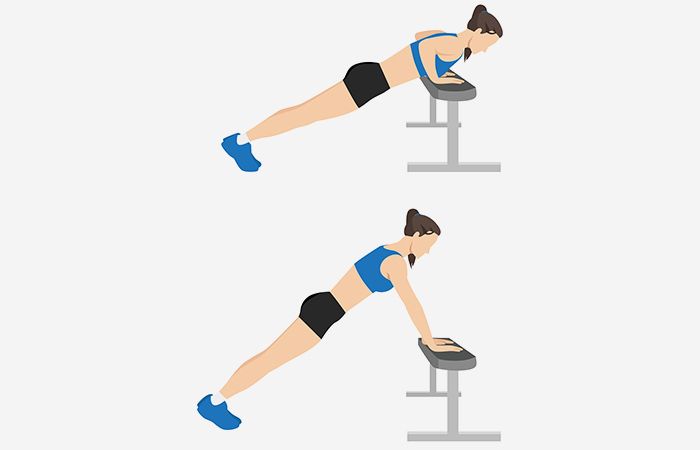Tabata Training: A Quick and Intense Workout for Busy People

With our increasingly busy lives, finding time to exercise can be a challenge. However, it is essential to prioritize our health and fitness. One solution that has gained popularity in recent years is Tabata training – a quick and intense workout that can be done in just a few minutes.
What is Tabata Training?
Tabata training is a form of high-intensity interval training (HIIT) that was developed by Dr. Izumi Tabata and his colleagues at the National Institute of Fitness and Sports in Tokyo. It involves performing exercises at maximum intensity for 20 seconds followed by a 10-second rest, repeated for a total of four minutes (eight cycles).
The Benefits
1. Time-efficient: Tabata training offers a quick and effective workout that fits into even the busiest schedules. With just four minutes of intense exercise, you can achieve greater results compared to longer, moderate-intensity workouts.
2. Increased calorie burn: Due to its high-intensity nature, Tabata training stimulates the metabolism, leading to more calories burned during and after the workout. This can be beneficial for weight loss and overall calorie management.
3. Improved cardiovascular fitness: The short bursts of intense exercise followed by brief rest periods push your cardiovascular system to its limits, leading to improved aerobic and anaerobic capacity.
4. Enhanced muscle strength and endurance: Tabata training targets multiple muscle groups and increases both muscular strength and endurance. This can result in a toned physique and improved functional fitness.
Getting Started with Tabata Training
1. Warm-up: Before diving into a Tabata workout, it is crucial to warm up your body. Start with some light cardio exercises such as jogging or jumping jacks for 5-10 minutes.
2. Choose your exercises: Tabata training can include a wide variety of exercises, such as burpees, squats, push-ups, mountain climbers, and more. Select exercises that target different muscle groups and keep variety in your routine.
3. Set your timer: Timing is everything in Tabata training. You can use a timer or smartphone app to set 20 seconds of work followed by 10 seconds of rest, repeating for a total of eight cycles.
4. Execute the workout: Once you’re set up, perform each exercise at maximum intensity for the designated 20 seconds, then rest for 10 seconds. Repeat this cycle for a total of four minutes.
5. Cool down: After completing your Tabata workout, don’t forget to cool down with some stretching exercises to prevent muscle soreness and promote flexibility.
Tabata vs. Traditional Cardio
While traditional cardio exercises have their merits, Tabata training offers several advantages:
– More efficient: Tabata workouts are significantly shorter than traditional cardio sessions, making them ideal for those with limited time.
– Greater calorie burn: Due to the intense nature of Tabata training, your body continues to burn calories even after the workout. This phenomenon is known as the “afterburn effect.”
– Muscle building: Traditional cardio exercises primarily focus on cardiovascular fitness, while Tabata training simultaneously builds muscle strength and endurance.
– Metabolic boost: The intense bursts of exercise in Tabata training raise your heart rate and activate your metabolism, leading to increased fat burning.
Staying Consistent with Tabata Training
To get the most out of Tabata training and maintain consistency, consider the following tips:
– Start slowly: If you are new to Tabata training or high-intensity workouts, begin with shorter intervals and gradually increase the intensity and duration as your fitness level improves.
– Be consistent with workouts: Aim to incorporate Tabata training into your fitness routine at least two to three times a week to see notable improvements.
– Mix it up: To prevent workout boredom and challenge different muscle groups, vary your exercises regularly. This not only keeps your workouts interesting but also ensures all muscle groups are engaged.
– Listen to your body: Tabata training is intense, so it’s crucial to pay attention to your body’s signals. If an exercise feels too challenging or causes pain, modify it or replace it with a different one.
– Rest and recover: Allow your body enough time to recover between Tabata workouts. Adequate rest and recovery will enable you to perform at your best during each session.
In Conclusion
With its quick and intense nature, Tabata training is an excellent workout option for busy individuals seeking maximum results in minimal time. By incorporating this high-intensity interval training method into your fitness routine, you can improve your cardiovascular fitness, burn calories, and develop strength and endurance.
Remember to start gradually, listen to your body, and stay consistent. With dedication and perseverance, you’ll soon reap the rewards of Tabata training and achieve a healthier, fitter lifestyle.
Posted by: Your Name
Date: Today’s Date


